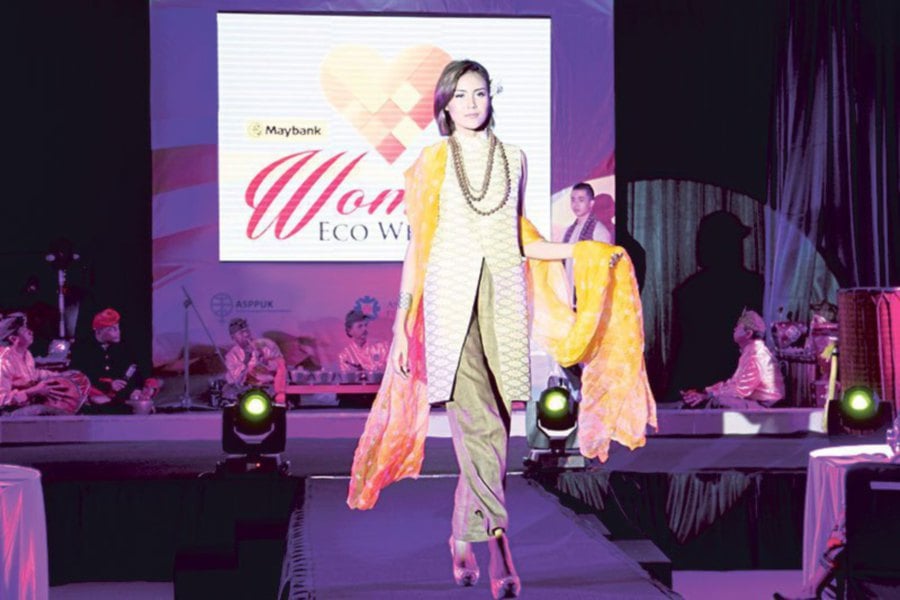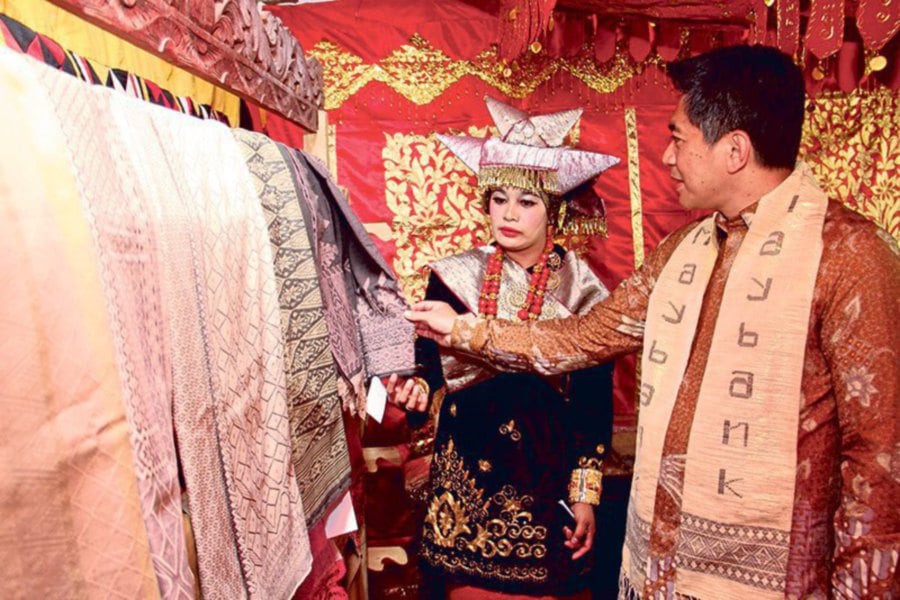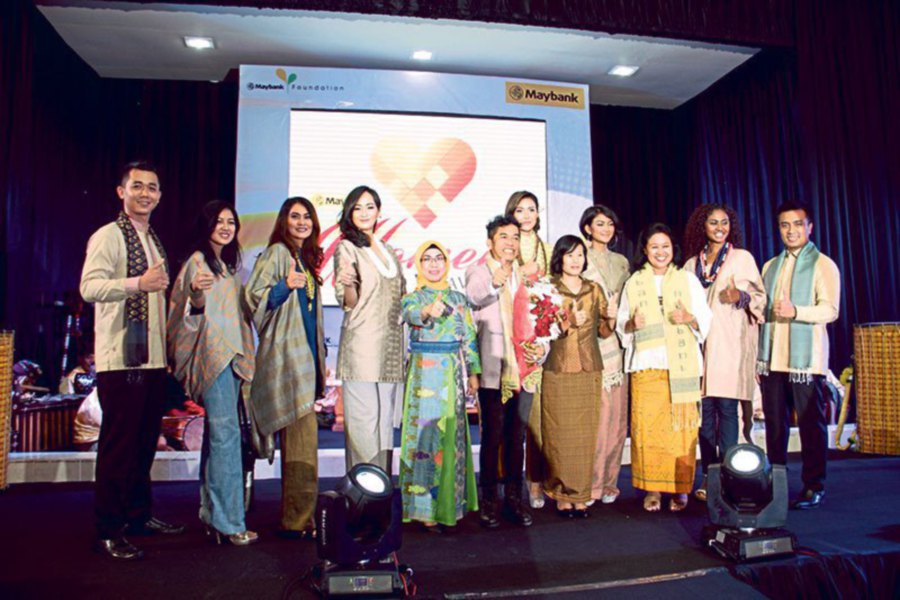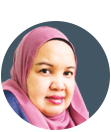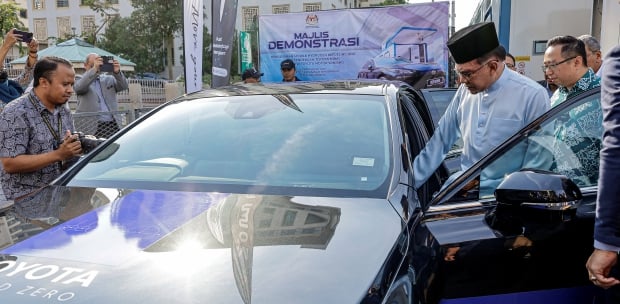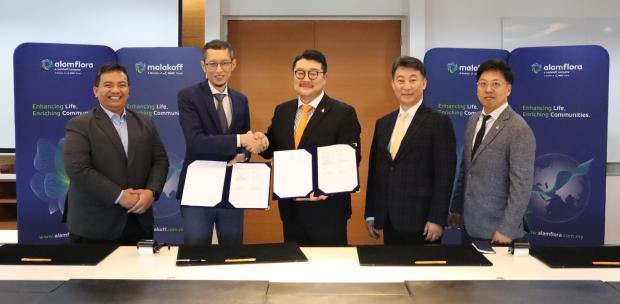“HERE, take this scarf,” an official from Maybank Indonesia tells me. “We’re giving one each to all our guests,” he adds. Some guests had already wrapped the scarf around their necks. The silk scarf is super smooth and the colour is pleasing to the eye. “This is made by our weavers,” the official volunteers the information. He is referring to the Maybank Women Eco-Weavers.
Eco-weavers, you ask? These are a group of women who undertake environmental friendly weaving activities. The fabric they weave is 100 per cent natural, in that the natural dye colour used is made from tree barks, leaves and seeds. They weave the fabric using traditional weaving machines that does not use electricity.
Well, eco — short for ecological — seemed to be the new buzzword in the fashion world. Designers such as Stella McCartney, for example, have recently attracted the crowd to what has been termed as “socially-conscious and environmentally-friendly fashion.”
Green designer Ryan Jude Novelline created a ballroom gown constructed entirely from the pages of recycled and discarded children’s books while eco-couture designer Lucy Tammam uses eri silk (ahimsa/peace silk) and organic cotton to create her eco-friendly couture evening and bridal wear collections.
In this part of the world, there is Merdi Silombing from Indonesia.
Merdi, a much celebrated fashion designer and textile artist, is working together with the Maybank women eco-weavers under the programme to create the beautiful woven fabric. He is turning them into modern fashion.
“It was initially very difficult to train them,” he tells the audience after the fashion show which is held as part of the launch of the Maybank programme in Lombok. “There is a live-in designer who teaches them about design, threads and colours. They are willing to learn and we help them. And these clothes you see here are made from the fabric they had woven,” he says.
Excitedly, he explains about where they source the natural dyes for the woven fabric. “Did you know that a great source for natural dyes can be found right in your own backyard?” he asks.
Natural dyes are dyes or colourants derived from plants, invertebrates, or minerals. The majority of natural dyes are vegetable dyes from plant sources — roots, berries, bark, leaves, and wood — and other organic sources such as fungi and lichens.
The Indigo leaves, crushed and boiled in water and mixed with alum, produces a thick wax—like blue black liquid. The root scrapings of the morinda tinctoria (Indian mulberry) tree create a red, chocolate or purple liquid. The reddish-brown colour comes from mahogany, brown acid from the seeds, light brown colour from teak trunk, and dark brown stems of banana root, and purple is made from the skin of the mangosteen and wine soil.
Four hundred Indonesian weavers from Central and East Lombok, as well as Sawahlunto and Tanah Datar regencies in West Sumatra and 150 weavers from Takeo Province in Cambodia will be joining them. The programme will soon be expanded to Laos, Vietnam and the Philippines.
The ancient art of textile weaving is one of the many similarities that cuts across the borders of the 10 Asean nations. And Merdi aims to bring these eco woven fabrics onto the international stage.


